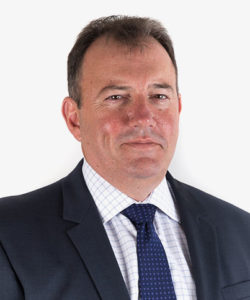In an open letter to the Government and its regulators, Gold Coast adviser and licensee chief, Paul Forbes, documents a dizzying trail of red tape which all advisers must currently follow when informing their clients about the fees they charge. This is a plea for common sense made by Forbes to Canberra’s bureaucrats and decision-makers…
…you have taken changes that we were happy to embrace and twisted them into a legal and administrative nightmare
I have no doubt your financial services industry reform agenda is well-intended, but you have taken changes that we were happy to embrace and twisted them into a legal and administrative nightmare that is spiralling in on itself. It’s reached the point where we can’t twitch a finger without another document needing to be signed and no one but the most well-heeled Australian is able to afford our services.
A prime example of what we need to talk about is FASEA.
Are values, ethics and minimum education standards a good idea? Tick!
But rather than create a working group of practitioners and licensees, you peopled FASEA with academics and special interest groups. You added one practitioner to give it some credence but this was only ever one vote and easily outnumbered.
So, what did we end up with?
The values of FASEA are admirable and fully supported by the advice community. Trustworthiness, Competence, Honesty, Fairness and Diligence are attributes we all strive to achieve. Like most communities, however, it is only a very small percentage who would test this and, if these are values you struggle with, no amount of education is going to make a difference.
The education standards, which should only have been applied to new entrants, are being retrospectively applied to existing advisers, including those who have been working in this industry for 30 or more years. There’s been no recognition of non-FP degrees, which didn’t exist when these people started and no recognition of the CPD commitments that everyone has been completing and paying for since 2003. Apparently the CPD wasn’t degree standard according to FASEA, so this doesn’t count. That should have set a few alarm bells ringing right there and then.
Those of us who have invested heavily in our education for many years suddenly find a new graduate with a B.Bus. FP is more qualified than advisers with 20 years’ experience and multiple degrees in ‘unimportant’ disciplines such as economics or accounting or even engineering. If you did your study twenty years ago, there wasn’t an FP module. It didn’t exist! You studied what was available and kept learning. You completed specialty courses, attended conferences and seminars because that was how you learned – on the job – as you do with every role. A degree is only ever a beginning.
These new minimum education standards, which must be met by all existing advisers, have led to a mass exodus to the point where we now have less than 20,000 advisers in Australia to meet the needs of advice hungry consumers. To put that in perspective, there are more than 76,000 practicing solicitors in Australia (Law Society National Report 2018), and in 2020 there were more than 140,000 accountants (National Accounting industry insights )
If you’re a sixty-year-old adviser with 30 years’ experience, are you going to add studying for a degree part time into an already crammed week? You might finish in five years, but then only work for a few more. Why would you do that to yourself?
Our most experienced advisers are voting with their feet. Published data indicates 2,837 advisers left the industry in the calendar year 2020. And while educational qualifications are part of the issue, escalating costs associated with providing financial advice is an even bigger factor.
I don’t want to dwell on each of the FASEA principles but would talk to two. The first one is easy:
FASEA’s Code of Ethics Standard 3 on conflicts is unworkable and even the ethics lecturer we heard, provided by FASEA, struggled to explain how you can run a commercial business and meet its requirements at the same time. We have seen numerous attempts of ‘additional’ guidance around Standard 3, but it is generally incomprehensible.
My suggestion: we have Corporations Law, which has served Australia well. Just work with that! It works for every other Australian business, so why should ours be different?
The best example of regulatory gridlock, though, is Standard 4, which seems innocuous enough at first glance:
‘You may act for a client with the client’s free, prior and informed consent.’
This would not seem to be a problem. But that was before ministers, Treasury and ASIC got a hold of it.
Just to remind the reader of what has already been required of advisers for at least the last twenty years, even before Financial Services Reform in 2003:
1. Initial meeting
Adviser meets with client. If adviser and client decide to initiate an advice relationship, the adviser must immediately provide a Financial Services Guide which outlines a whole range of information including how fees are charged and any potential conflicts. An initial gift for the client to take home and read at their leisure.
2. Terms of engagement
The client will also sign a ‘Terms of Engagement’ agreement which advises the cost of the initial advice, implementation and an approximation of ongoing fees. This is discussed and signed in the first meeting. This is specific to the client and the fees are provided in dollar amounts as well as percentages when applicable.
The adviser then pulls all the client’s information together, builds the strategy and eventually creates the plan. This may take place over several meetings.
3. Strategy presentation
The client is brought in for the strategy presentation. In this presentation the client is advised of the exact fees that will apply to them in both dollar and percentage terms and the record of this is provided in a Statement of Advice for them to take home.
4. Authority to proceed
The client then signs an authority to proceed, and the real work begins. If product is to be used, any advice fees that are going to be deducted are specifically spoken to in the application forms and the client signs off on this on the application form.
The client’s advice is implemented, and they then take part in the ongoing service program if that is what they have agreed to.
The ongoing service program delivers reviews, manages their portfolios and/or insurances, facilitates additional investments and redemptions and adapts to changes in the client’s circumstances – all while trying to keep them on track.
5. Account access
The client has access to their accounts via electronic platforms, which in the better quality solutions are updated every twenty minutes, and the transactions are clearly visible, similar to a bank account statement. The adviser’s fees are clearly described as ‘adviser fees’.
6. Annual statement
The client will also receive an annual statement and a taxation statement from their product provider which clearly separates administration, investment and adviser fees.
Despite all this, the regulator was told and agreed that clients weren’t aware of the fees they were being charged!
In 2013 we saw the introduction of Fee Disclosure Statements (FDS) and Opt-in under the FoFA reforms, so for the last eight years, in addition to the first six steps, we have now been required to add these further processes:
7. Annual FDS
Every twelve months the client receives an FDS that explains these services. The FDS is very clear and there is no ambiguity. The fees are in dollar terms.
The client will also have had their service expectations met as per the description in the Fee Disclosure Statement (FDS), which is likely to include a number of reviews, both personal and virtual. In those reviews, they receive additional disclosures and will be provided an additional Record of Advice which will talk to any change in fees, if necessary, or a notation to state there are no changes in adviser fees.
8. Bi-annual Opt-in
Initially we had a bi-annual ‘Opt-in’. The client must positively ‘Opt-in’ to the ongoing advice every two years, agreeing to continue to take the services of the adviser. Whether an opt-in year or not the client still receives an FDS each year.
The clients know they are paying fees and that they are being collected by either a bank account or from their product. They make a conscious decision to continue taking this advice service and can opt out of this decision at any time.
Somehow all these existing details and processes were lost in the Royal Commission?
Still not enough apparently? Are we sure the client knows where the fees – that they are continually being told about – are coming from? They might be assuming they are magically appearing in the adviser’s accounts, at no cost to themselves
Today, post Royal Commission, in addition to all the above we have additional requirements.
9. Annual Opt-in
We now have an annual, rather than a bi-annual Opt-in arrangement, which was semi redundant in any case, as most businesses were drifting to this annual arrangement simply due to the unnecessary complexity of multiple dates.
10. Fee consent
We now have another disclosure regime – fee consent forms from product manufacturers – that require even more forms to be signed by the client to assure the regulator that they are aware of where their fees are being collected from, and the services they are paying for, even though – as you can see from all the above – there can be no doubt the client knows all of this already and has been advised of it continually.
Not only has the new regime added paperwork, time and cost, it has added confusion
Not only has the new regime added paperwork, time and cost, it has added confusion. Instead of simply using the existing regime that is already disclosed to a ridiculous extent, it has brought in its own dates and limitations.
Trustees will be continually setting ‘anniversary’ dates based on the date the person signed a form. This will be different from the FDS date as during the ‘transitional year’ that is the date you send the form to the client. Why? Because ‘Treasury has decided this’ after no consultation with practitioners or our representative bodies. Imagine if the date of your tax return changed every year based on the date you signed your return rather than simply using the financial year. That is how cumbersome and silly this is.
The FDS now has to be accurate to the day before you send it out. You can’t trust the fees you have actually received. Instead, you have to view the client’s product account and make sure that there isn’t a fee that has been deducted, which you haven’t yet received.
…you can’t even round these fees to the nearest dollar
If you are a large practice you may have to go into 1,000 personal accounts and check the fees – and that is assuming they only have one product. Believe it or not, you can’t even round these fees to the nearest dollar – they must be to the cent! You also need to forecast the fees you will collect in the next twelve months, and you must be accurate, under threat of civil penalty, even though this will need you to allow for contributions you are not yet aware of, redemptions that may or not happen, changes in investment balances, taxes on super and possible insurance premiums increases, over all of which the adviser has no control.
So, regulators and ministers, if I haven’t lost you, it will come as no surprise that you have lost the client by now. Most are simply bemused and irritated, but our older clients are both confused and concerned and need constant reassurance these are not additional fees. They will tell you they understand their fees. Just ask them!
If you re-read the 10 points above, please have a long think about what we actually set out to achieve, compared with the nightmare of red tape that you have designed and implemented.
We set out to make sure the client is aware of the fees they are paying and the services that those fees were paying for, ergo ‘Informed Consent’.
Do you really believe these ten processes are necessary to achieve this, and where is the personal responsibility for a client to make themselves aware of this? How many times can we tell clients the same thing and then be told ‘they don’t understand it’?
Consumers understand fees and pay them every day of their lives. To assume they can’t understand a statement that clearly sets out those fees would seem disingenuous. They can also cancel their relationship with their adviser at any time. So, commercially, advisers have to deliver on their promises, or they will be sacked.
All of these steps add significant cost to a practice
All of these steps add significant cost to a practice – a cost which ultimately is passed on to the consumer. The regulator is currently conducting a review into ‘Advice Affordability’! Well, reducing the enormous amount of compliance work and red tape here, would seem a great place to start.
An FSG, Terms of engagement, Advice document, FDS and Opt-in, along with a statement from any product providers that clearly sets out who is being paid what, would seem more than enough.
Australians do need advice and we want professionals providing it. We have jumped through all your hoops, put up with all the additional costs imposed on our businesses and added resources to provide superfluous documentation that adds no value to the client. We have professionals providing the advice. Now we need a sensible regulatory environment that recognises this and supports it.
 Paul Forbes is the CEO of Australian Advice Network… See also: The Reality of the Decline in Life Risk Sales – A Case Study
Paul Forbes is the CEO of Australian Advice Network… See also: The Reality of the Decline in Life Risk Sales – A Case Study








Well put Paul. Its not just the cost which is making advice unattainable for many clients. Its the process & regulatory requirements a client & adviser need to go through to achieve the goal. Some clients are asking, why subject myself to the time consuming & onerous advice process when I can go online and push some buttons?
I’ve just lost a long term client who I’d looked after well for a number of years. He, becoming sick of the high level of premium increases, wanted to lower his costs. He, rather than approach me to review as we’ve done every year, googled and dealt with an online insurer. Why? Because having been through the advice process a number of times he didn’t want to have to do it again for something he felt should be relatively simple.
The result? He has lower quality, more expensive cover. I somehow don’t think its been in his best interests.
This is beautifully written and makes absolutely no sense if the interests of consumers of ongoing financial services are considered the first priority as it makes financial advice much more expensive, cumbersome and opaque.
It is extremely well designed, and remember that the Honourable Kenneth Madison Hayne AC QC was an excellent lawyer, if you want to remove ongoing financial advice from all but wholesale clients.
I worked with Paul back in the mid-2000s when he was one of the bosses at Guardian Financial Planning. A more personable, highly intelligent, industry-smart, genuine and caring man you could not hope to meet. It was a pleasure to know he was steering our ship. His words here brighten my day just to know he’s still around and a force in the industry. We need more like him. It is such a shame the people who are making the decisions and who have already made (extremely bad and damaging) decisions do not listen to people like Paul. If they did I am sure we’d only have 1% of the problems in our industry we now have to endure. This absolute idiocy of which Paul speaks has caused THIS little 60 year old life adviser to target his retirement for Q4 2021 sadly. The craziness has turned me a bit crazy, unfortunately 🙁 . . . so after 35 years I have decided it is simply too hard – for ALL of the reasons Paul outlines. God luv ya Paul keep on doing your best to keep the bastards honest mate! Wish I could have worked with you again before they pushed me out. All the best!
Thanks for the vote of confidence Squeaky’21. We had a good crew in Guardian and really enjoyed my time there. Sorry to hear you are stepping out of the industry and unfortunately I do understand it. Probably not going to get better in the near term but hopefully we get some relief in the medium term. Probably overly optimistic but it is a character flaw
Comments are closed.